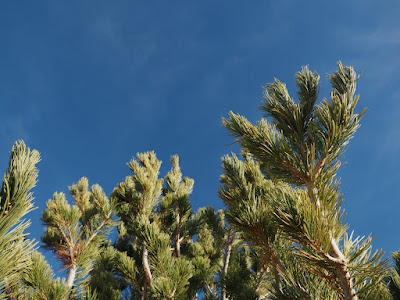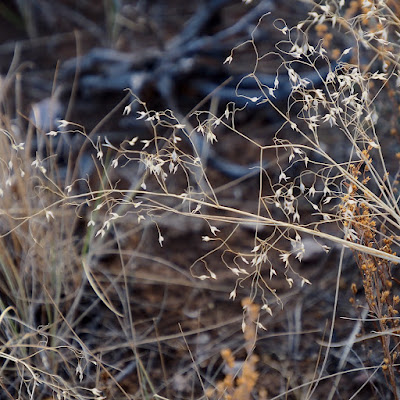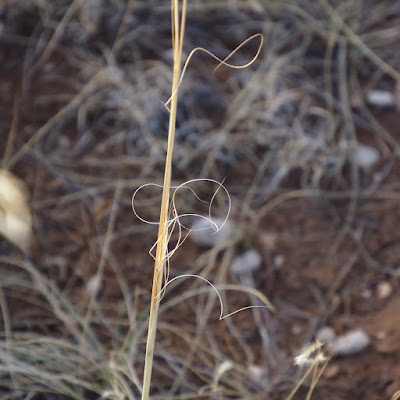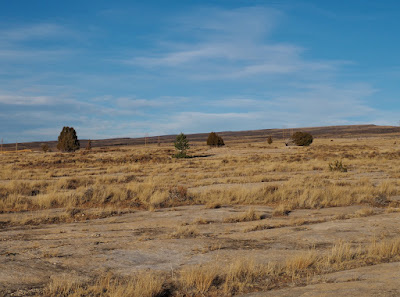 |
| The usual view. Left arrow marks my junipers, right points to the fallen one. Note sign on left. |
Late yesterday afternoon we visited the two Rocky Mountain Junipers I'm following this year. It was a perfect time to go—cool, surprisingly calm, with low golden light.
We started on Trail 1 as we always do, in spite of the recently added sign. Leashes are now required on this trail. Neither of us like them so we went without, yet we traversed the next fifty yards safely! ;) Then we left the trail to travel cross country across slabby limestone, making a beeline for the junipers.
 |
| The Fallen One. |
 |
| My junipers against the sky. |
“Trees are poems that the earth writes upon the sky.” Khalil Gibran
I came upon this by way of Joran Viers, City Forester of Albuquerque, and Michael H., who sent it my way. Gibran likely was thinking of deciduous trees with large intricate canopies rather than the small dense "canopies" of our tough little junipers. Yet poems were worth considering, and I looked through the lens to check.
 |
| Junipers poem viewed from the west in golden light. |
 |
| Limber Pine poem with a bit of a breeze. |
 |
| Lots of juniper berries ... a nice ending to the season. |
As we continued east cross country, I discovered we weren't alone. We were being carefully watched by a pronghorn buck and his companions.
 |
| They were much more interested in us than we were in them. |
 |
| Off to more interesting things (click to view). |
This is typical pronghorn behavior here ... watch for awhile then amble off. My field assistant has no interest in animals this large, being programmed to hunt small burrowing rodents (basenji genes). And I'm more interested in plants. So we too ambled off, heading west back to the car through the prairie. The grasses were beautifully backlit, and it was hard to keep moving.
 |
| Indian Ricegrass, Achnatherum hymenoides. |
 |
| Curled seed tails of Needle-and-Thread, Hesperostipa comata. |
 |
| Blue Grama, Bouteloua gracilis (up close below). |
This is my contribution to the
monthly gathering of Treefollowers, kindly hosted by
The Squirrelbasket. Come join us ... it's free, fun, and always interesting.


























